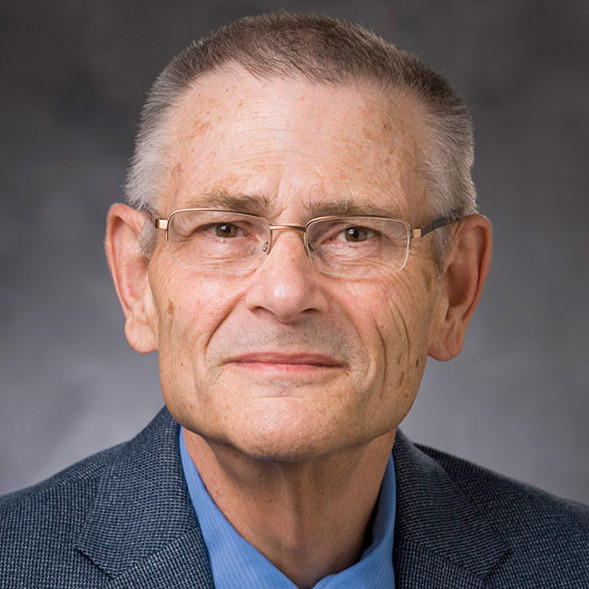About this book
This book is a product of years of researching, working in various archives, interviewing key participants, and compiling pieces from wealth of books, magazines, and newspapers into one fascinating story. This almost half a century long story started at the beginning of Billy Graham’s evangelistic ministry in 1949 and lasted until almost the end of his international outreach in 1993.
It connects many dots into one big picture. Those are stories that include the rise of “yellow press,” “America First” isolationism, media-driven wars, man-made starvation in the USSR, recovery from the great depression and suppression of reporting on Soviet human rights violations, waves of Soviet religious persecution, the saga of the Siberian Seven who spent five years in the US Embassy in Moscow, Cold War and arms reduction, the Soviet “Peace Offensive” strategy, decline and fall of the Soviet Union and America’s attempts to preserve it from falling apart, the rise of public evangelism in the USSR, and more. You will learn how Billy Graham became a national celebrity, how he tried to evangelize the USSR since 1947, his conflict with a religious rights advocate from Great Britain Michael Bourdeaux of the Oxford-based Keston College, his tensions with Reagan administration, and how he turned tables on the Soviet propaganda machine.
This is a story of struggles, fears, controversies, failures, successes, and of the final triumph of the Cross over the Hammer and Sickle.
Table of Contents
- Foreword 1
- Introduction 3
-
How Anti-communism Helped Billy Graham Become Famous
6
- A Star in the Making 6
- The Kiss of Hearst 8
- Graham’s Preaching Against Communism in 1949 33
- Conclusion 48
-
The Change of Tune
52
- Departure From Fundamentalism 52
- Billy Graham and the End of McCarthyism 65
- Failed Attempts to Come to the USSR 67
- Conclusion 72
-
The First Visit to Moscow in 1959
75
- Anticipating an Invitation 75
- Coming as a Tourist 76
- Conclusion 90
-
The Siberian Seven and Persecution of Christians in the USSR
93
- Religious Persecution in the USSR Before and During the 1960s 97
- The Siberian Seven Saga 106
- Conclusion 130
-
The Controversial Peace Conference of 1982
132
- Preliminary Negotiations 132
- The Soviet Peace Offensive 139
- Billy Graham and SALT II 145
- Billy Graham and the Reagan Administration 150
- The Moscow Visit Schedule 162
- The Peace Conference 173
- Graham’s Visit to the Siberians 175
- Graham’s Comments on Religious Freedom in the USSR 187
- Criticism of Graham’s Statements 199
- The Soviet Propaganda Overview 214
- The Playboy Quandary 222
- Graham’s Anti-Communism 220
- Results of the 1982 Visit 225
- Conclusion 228
-
The Preaching Tours of 1984 and 1988
239
- The 1984 Trip to the USSR 239
- The 1000th Anniversary Celebration and the Preaching Tour of 1988 256
- Conclusion 284
-
The School of Evangelism and the Crusade
290
- The 1991 School of Evangelism and the Fall of the Soviet Union 294
- The Moscow Crusade of 1992 320
- Conclusion 346
- Epilogue 349
- Afterword 355
- Full Bibliography 360
- Selected Bibliography 399
Photos and Videos
This section will help put some faces to the names and events described in the book.
Chapter 1
- 1949 Los Angeles Crusade Photos. Source: Los Angeles Times.
- 1949 Los Angeles Crusade Photos. Source: The Billy Graham Evangelistic Association.
- 1949 Los Angeles Crusade Promotion Posters. Source: The Billy Graham Library.
- 1949 Los Angeles Crusade Promotion Video. Source: Museum of the Bible.
- Billy Grahm's letter to William Randolph Hearst. Source: The Billy Graham Evangelistic Association.
- About William Randolph Hearst. Source: PBS | American Experience.
- About Yellow Press. Source: PBS | American Experience.
- About Gareth Jones. Source: BBC / Cambridge Ukrainian Studies.
Chapter 2
- The fall of Joseph McCarthy. Source: PBS | American Experience.
Chapter 3
- 1959 Graham praying at Lenin Stadium in Moscow. Source: BGEA.
- 1959 Billy Graham in Moscow. Source: Alamy.
Chapter 4
- Photos of persecuted Christians 1 (slideshow). Source: Baylor University.
- Photos of persecuted Christians 2 (slideshow). Source: Baylor University.
- Photos and videos of persecuted Christians. Source: Baylor University.
- Documentary about the persecution of Christians in the USSR. Source: Baylor University.
- 1963 Billy Graham on Siberian Pentecostals and Religious Freedoms in the USSR. Source: SMU.
- 1979 Documentary about Christianity in the USSR in the 1970s. Source: Baylor University.
- Photos of the Siberian Seven (slideshow). Source: Baylor University.
Chapter 5
- 1982 Graham preaches in Moscow. Source: Reuters.
- 1982 Photos of visiting Moscow. Source: Decision Magazine.
- 1982 Graham meets with Filaret. Source: NBC (AP).
- 1982 Billy Graham with Ronald Reagan and their wives. Source: Wikimedia.
- 1982 Photos of Graham visiting the Siberian Seven in the US embassy (slideshow). Source: Baylor University.
- 1982 Graham preaches at Moscow Baptist Church. Source: Alamy.
- 1982 Billy Graham walks the streets of Moscow. Source: Alamy.
- 1982 Photo of Billy Graham during the Peace Conference. Source: UPI.
- 1982 Moscow Press Conference. Source: Alamy.
- 1982, 1984, 1988, 1991, 1992 Photos of Billy Graham's visits visits (Ru). Source: "Vozrozhdenie" Center (BGEA).
- 1982, 1984 Photos of Billy Graham's visits visits (Ru). Source: Vladymyr Cathedral.
- Videos of Billy Graham's visits (Ru). Source: Rain TV.
- 1982 Billy Graham leaving Moscow. Source: Alamy.
Chapter 6
- Documentary about 1984 preaching tour. Source: Youtube.
- 1984 Graham preaches in an Orthodox Church. Source: Alamy.
- 1984 Billy Graham and patriarch Pimen. Source: Alamy.
- 1988 Photos of Billy Graham in Kyiv, Ukraine. Source: BGEA.
- 1985 Human rights during Gorbachev's presidency. Source: Baylor University.
- 1988 Unofficial gatherings of Baptists in Kyiv, Ukraine (slideshow). Source: Baylor University.
- Documentary about 1988 visit to USSR . Source: Youtube.
- 1989 David Frost's documentary "A Prophet With Honor.". Source: Vision Video.
Chapter 7
- 1991 Photo of Graham's meeting with Gorbachev. Source: BGEA.
- 1991 Video of Graham's meeting with Gorbachev. Source: Reuters.
- 1991 Photo of Moscow School of Evangelism. Source: Alamy.
- 1991 Graham's audio report on the School of Evangelism. Source: BGEA.
- 1992 Photos of Moscow Crusade. Source: Mission Eurasia.
- 1992 Photo of the Red Army Choir Crusade. Source: Decision Magazine.
- Video of the 1992 Moscow Crusade. Source: World Wide Pictures.
- 2007 Franklin Graham Festival of Hope in Kyiv, Ukraine. Source: Kyiv Post.
- 2015 Franklin Graham Festival of Hope in Lviv, Ukraine. Source: BGEA.
- 2016 Discriminatory law in Russia. Source: CBN News.
- 2022 Franklin Graham preaches in Lviv, Ukraine at the beginning of the war. Source: BGEA.
- 2022 Franklin Graham's documentary about the war in Ukraine. Source: BGEA.
- 2022 Franklin Graham's documentary about Ukrainian Christian chaplains. Source: BGEA.
- 2024 Ukrainian Christian groups face violent crackdown from Russian forces. Source: PBS.
- 2024 Ukrainian evangelical pastors show resilience while facing persecution from Russian forces. Source: PBS.
- 2024 Russian persecution of Christians in Ukraine. Source: ICC.
- 2025 The role of Russian Protestants in the war against Ukraine. Source: Baptist Standard.
- 2025 "No God but Theirs" Russia's crackdown on Ukrainian Christians, unmasked. Source: Kyiv Independent.
Timeline
1949
1955
1959
1978
1982
1984
1988
1991
1992
Reviews

Blair CarlsonAnatoliy Orgunov’s book is a rich resource with thorough research and insightful analysis. I traveled with Mr. Graham on many of his trips to the Soviet Union and served as the director of the 1992 Billy Graham Mission in Moscow, and so it has been personally significant to relive these experiences. New details emerged through Orgunov’s diligent exploration of the very specific events, processes, and persons that were part of the fulfillment of God’s timing. God had planted a desire in Billy Graham's heart to preach the gospel in Russia many years before, and then He fulfilled that vision at just the right moment in history in ways that were far beyond expectation. Through these pages, we see Christ’s love for His people and His church through one man, Billy Graham, whose life echoed the words of Jesus: “I must preach the good news of the kingdom of God... that is why I was sent” (Luke 4:43)."
Director of the 1992 Billy Graham Mission in Moscow

Dr. Grant WackerWhy? The Story of Billy Graham’s Ministry in the Former Soviet Union, is unique. Saying that a work is unique is not always a compliment, but in this case, it is. Though I might differ with Orgunov on minor points of interpretation here and there, they are quibbles. If I were still teaching a course on recent American or global evangelicalism, I would place this book on the list of required texts, and that is not a compliment I offer very often!
To the best of my knowledge, Why? is the only serious scholarly examination of Billy Graham’s long relationship with the Soviet Union, running from his unrealized efforts to take the gospel to there in the late 1940s to his final “crusade” in 1992. But this book is far more than that. For one thing, Orgunov provides a model for how to write clearly, crisply, and forcefully, without a trace of jargon or obfuscation. Second, Orgunov also provides a model for researching the old-fashioned way, carefully excavating primary, secondary, and tertiary (theological and social science) sources with mind-boggling diligence. Indeed, if there are any relevant sources that he missed, I can’t name them. Third—and this is a point I wish to emphasize— Orgunov not only unfolds the surface details of the story—the proverbial four horsemen of good journalism—Who? What? When? Where?—but also brings to light a steady stream of subtle nuances running deep beneath the surface. Fortunately, Orgunov does not hide his own perspective. He does not pretend to provide God’s Eye View of the narrative (no one can, but many historians seem to think they do). Rather, he makes it clear that he admires Graham’s boldness and tenacity without pretending that Graham made no mistakes. What we get, rather, is a man who did God’s work without suffering from the illusion that he did it on God’s behalf.
I am confident that if Graham were still with us—he died in 2018—he would read this book with pleasure, as well as a wry recognition that his story was both more interesting and more important than he ever imagined."
Gilbert T. Rowe Distinguished Professor (Emeritus) of Christian History Duke Divinity School. Author of two biographies "Billy Graham: America’s Pastor" and "One Soul at a Time: The Story of Billy Graham." Co-editor of "Billy Graham: American Pilgrim."
